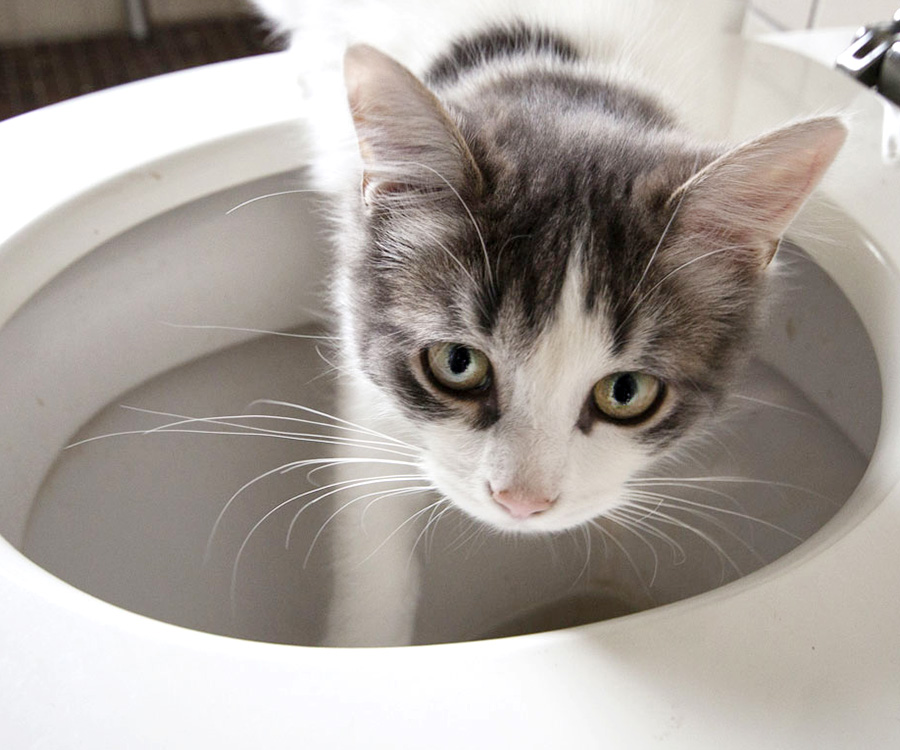Reasons Flushing Cat Poop Down Your Toilet May Cause Problems - Recommendations for Safe Disposal
Reasons Flushing Cat Poop Down Your Toilet May Cause Problems - Recommendations for Safe Disposal
Blog Article
The writer is making a few good observations related to Can You Flush Cat Poop Down The Toilet? in general in this article just below.

Intro
As pet cat owners, it's essential to bear in mind exactly how we dispose of our feline close friends' waste. While it may seem practical to flush pet cat poop down the bathroom, this technique can have detrimental repercussions for both the environment and human wellness.
Alternatives to Flushing
Thankfully, there are more secure and much more liable methods to dispose of feline poop. Consider the complying with alternatives:
1. Scoop and Dispose in Trash
One of the most typical approach of getting rid of pet cat poop is to scoop it into an eco-friendly bag and throw it in the garbage. Make certain to use a committed litter scoop and get rid of the waste without delay.
2. Use Biodegradable Litter
Select biodegradable feline clutter made from materials such as corn or wheat. These trashes are eco-friendly and can be securely gotten rid of in the garbage.
3. Hide in the Yard
If you have a backyard, consider burying feline waste in a marked area away from veggie yards and water resources. Be sure to dig deep sufficient to stop contamination of groundwater.
4. Mount a Pet Waste Disposal System
Purchase a pet dog waste disposal system specifically created for pet cat waste. These systems make use of enzymes to break down the waste, reducing odor and environmental effect.
Wellness Risks
Along with ecological worries, flushing feline waste can also position health and wellness threats to human beings. Cat feces may include Toxoplasma gondii, a parasite that can trigger toxoplasmosis-- a possibly extreme illness, particularly for pregnant women and individuals with weakened immune systems.
Environmental Impact
Flushing cat poop introduces damaging microorganisms and parasites right into the water supply, posing a significant risk to aquatic communities. These contaminants can negatively impact marine life and concession water top quality.
Conclusion
Responsible pet ownership expands past supplying food and sanctuary-- it likewise includes proper waste management. By avoiding purging feline poop down the bathroom and choosing alternative disposal methods, we can decrease our ecological footprint and safeguard human health.
Why Can’t I Flush Cat Poop?
It Spreads a Parasite
Cats are frequently infected with a parasite called toxoplasma gondii. The parasite causes an infection called toxoplasmosis. It is usually harmless to cats. The parasite only uses cat poop as a host for its eggs. Otherwise, the cat’s immune system usually keeps the infection at low enough levels to maintain its own health. But it does not stop the develop of eggs. These eggs are tiny and surprisingly tough. They may survive for a year before they begin to grow. But that’s the problem.
Our wastewater system is not designed to deal with toxoplasmosis eggs. Instead, most eggs will flush from your toilet into sewers and wastewater management plants. After the sewage is treated for many other harmful things in it, it is typically released into local rivers, lakes, or oceans. Here, the toxoplasmosis eggs can find new hosts, including starfish, crabs, otters, and many other wildlife. For many, this is a significant risk to their health. Toxoplasmosis can also end up infecting water sources that are important for agriculture, which means our deer, pigs, and sheep can get infected too.
Is There Risk to Humans?
There can be a risk to human life from flushing cat poop down the toilet. If you do so, the parasites from your cat’s poop can end up in shellfish, game animals, or livestock. If this meat is then served raw or undercooked, the people who eat it can get sick.
In fact, according to the CDC, 40 million people in the United States are infected with toxoplasma gondii. They get it from exposure to infected seafood, or from some kind of cat poop contamination, like drinking from a stream that is contaminated or touching anything that has come into contact with cat poop. That includes just cleaning a cat litter box.
Most people who get infected with these parasites will not develop any symptoms. However, for pregnant women or for those with compromised immune systems, the parasite can cause severe health problems.
How to Handle Cat Poop
The best way to handle cat poop is actually to clean the box more often. The eggs that the parasite sheds will not become active until one to five days after the cat poops. That means that if you clean daily, you’re much less likely to come into direct contact with infectious eggs.
That said, always dispose of cat poop in the garbage and not down the toilet. Wash your hands before and after you clean the litter box, and bring the bag of poop right outside to your garbage bins.
https://trenchlesssolutionsusa.com/why-cant-i-flush-cat-poop/

As a passionate reader about Can You Flush Cat Poo or Litter Down the Toilet?, I assumed sharing that information was sensible. Appreciated our review? Please share it. Help others check it out. Thank-you for going through it.
Call Today Report this page